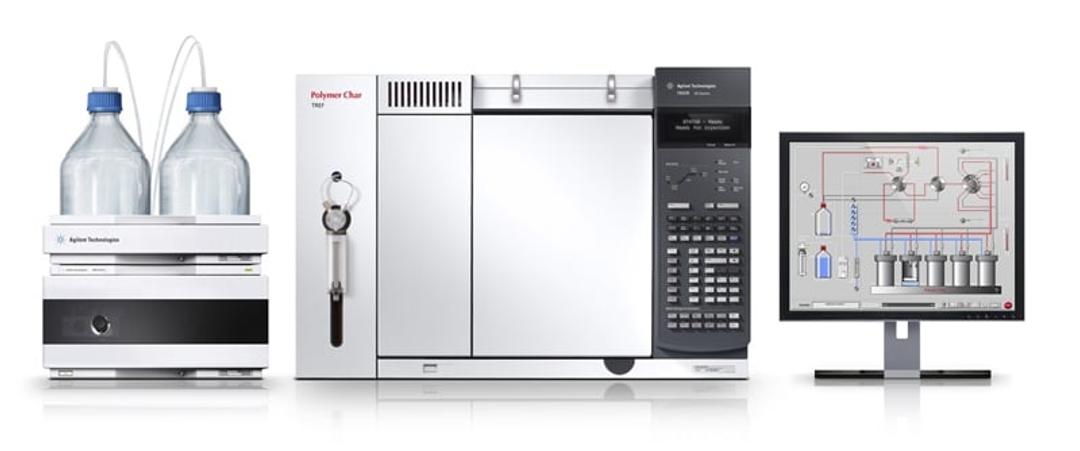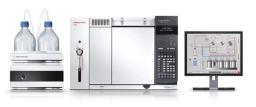TREF
Temperature Rising Elution Fractionation.

The supplier does not provide quotations for this product through SelectScience. You can search for similar products in our Product Directory.
Temperature Rising Elution Fractionation is the most comprehensive technique for the characterization of the Chemical Composition Distribution (CCD) in Polyolefins and Polymer Char’s TREF is the first fully automated analytical instrument that performs this technique.
Overview
Temperature Rising Elution Fractionation is the most comprehensive technique for the characterization of the Chemical Composition Distribution (CCD) in Polyolefins and Polymer Char’s TREF is the first fully automated analytical instrument that performs this technique.
The virtual instrumentation software controls the full process, so no manpower is required. Samples are put into the vessels and the instrument performs the solvent filling, dissolution, column loading, and temperature cycles combined with pump flow control. At the end, vessels and lines are cleaned and ready to analyze more samples.
The concentration of the sample is measured by an infrared detector (Polymer Char’s IR4), which can also offer information about comonomer content if a composition sensor is added. More information can be obtained by adding Viscometer and/or Light Scattering detectors.
TREF can be converted into a CRYSTAF-TREF combined system capable of running both techniques by using the same hardware. Each technique can provide complementary information on the CCD in some complex resins.
Features
· Five crystallization vessels to analyze up to 5 samples with no supervision required.
· Analysis time of 6 hours per sample under standard conditions.
· Fully automated process with no solvent handling, including a final cleaning of the lines and vessels.
· No manpower and no solvents handling along the whole process.
· Low solvent consumption.
· Infrared Detector IR4 incorporated, with the possibility of adding a composition sensor for methyls or carbonyls measurement.
· Virtual Instrumentation software with whole control of the instrument hardware and process.
· Possibility of calibrating the instrument to obtain the CCD curve in comonomer content units.
· Possibility of subambient capability (down to -20ºC) for low crystallinity samples.
· Possibility of remote control connection to allow a fast diagnosis.
· Possibility of adding other detectors such as a Viscometer or Light Scattering (DAWN®
HELEOS™ II 8 or 18 angle of Wyatt Technology).
· Easily convertible to a CRYSTAF-TREF combined instrument.
Detectors
Infrared Detector IR4 OEM
IR4 is the standard detector incorporated by default in all the Polymer Char analytical instruments in its OEM version. IR4 is a dual wavelength stand-alone infrared detector, which uses the principle of infrared absorption spectroscopy to measure the concentration and composition in polyolefins.
IR4 is designed to measure on-line concentration and composition in HPLC, GPC or to couple it with other separation techniques like CRYSTAF, TREF, etc., and it has been proved as the most appropriate detector for polyolefins.
When adding a composition or a carbonyls sensor, other useful information can be obtained in addition to the concentration.
Viscometer
A high sensitivity capillary viscometer is an ideal complement to the Infrared detector in some polyolefin characterization instruments such as GPC-IR, TREF, CEF or CRYSTEX.
Viscometer configuration is optimized to achieve a better performance in each technique.
Light Scattering DAWN® HELEOS™ II of Wyatt Technology
Light Scattering detectors provide absolute measurement of Molar Mass. When coupling a Light Scattering to a Polymer Char instrument, complementary information can be obtained to have a more complete and precise characterization.
Light Scattering is especially effective in some techniques like GPC/SEC, for instance when searching for Long Chain Branching results among others; therefore, Polymer Char GPC-IR is designed to incorporate the most appropriate Light Scattering detector for polyolefins currently in the market: DAWN® HELEOS™ II of Wyatt Technology.
The DAWN® HELEOS™ II 8 or 18 angle is offered as an additional detector in other Polymer Char instruments such as TREF or CEF.
Software
The TREF Software controls the whole instrument hardware to fully automate the TREF technique; therefore, no manpower or solvents handling is required. A wide range of the TREF analytical process conditions are available to the user, to allow the needed flexibility for both routine analysis and research jobs.
The TREF Software includes a database to access the analyzed samples results at any time, even when the instrument is running. Calculations offer cumulative and derivative curves (CCD) per sample vs. temperature. When adding a comonomer calibration, CCD results are showed in comonomer content units.
The TREF Software monitors and saves all the detectors and sensors signals for every run. This becomes a powerful diagnosis tool in combination with the manual operation, which offers a virtual instrumentation interface to operate directly the instrument hardware elements.



